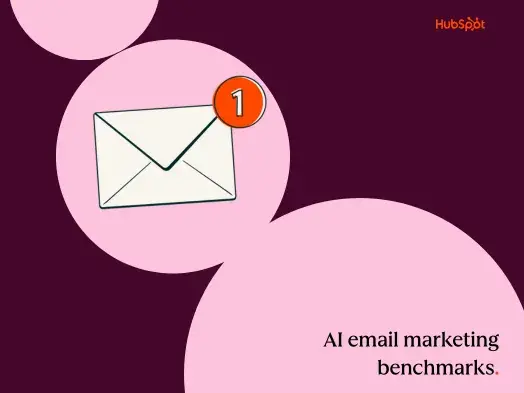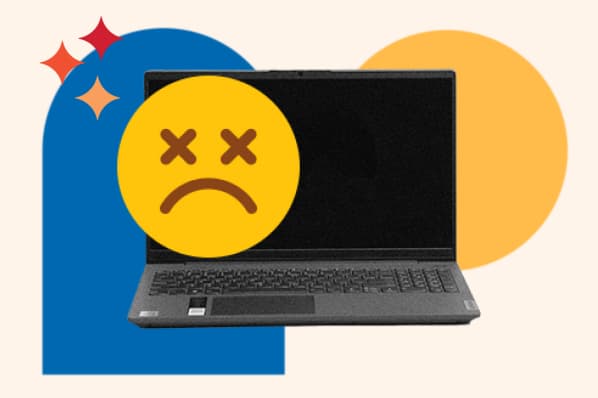Sales emails are difficult to get right. They’re time-consuming to write, time-consuming to tailor, and aren’t guaranteed to pay off.
But it’s time to stop thinking about email as a necessary evil. Yes, writing good email is a skill that must be practiced, but once you master it you’ll be deploying effective messages in no time.
Luckily, we’ve got your back.
This post is the ultimate guide to writing each of the 10 types of sales emails, with a bonus section on how to make your writing shine. Use the jump links to navigate through this post.
Writing 101: 9 Tips
If someone got you something you really wanted, but it was wrapped in moldy newspaper, you wouldn’t get anywhere near it (I hope).
Emails work the same way. Even if your substance is valuable and relevant, packaging your writing the wrong way will turn off prospects and prevent your message from being heard. The 11 tips below will keep your writing clean so your prospects can focus on what you want them to.
1) Proofread religiously.
It may seem obvious, but there’s nothing worse than opening any piece of writing and finding it riddled with errors. It calls into question your professionalism, expertise, and authority. After all, if you can’t be bothered to check whether you’ve used the right “their/they’re/there,” why should your prospect take the rest of your message seriously?
2) Triple-check that all included information is correct.
Your prospect might forgive a typo, but you can bet they’ll remember if you mess up their name, their company’s name, your name, your company’s name, or their job title. Especially when you haven’t already established trust (if you’re sending a prospecting or follow-up email, perhaps), this is an easy way to get sent to the “Junk” folder.
And this covers everything from spelling to accuracy. Don’t ask your prospect for a meeting on “Thursday, November 16th” when November 16th is actually a Wednesday. Make sure you’ve attached the resource you promised and that your included blog post links work. Double-check your WebEx or GoToMeeting links, and that you’ve provided your correct office number.
You can’t guarantee every sale will go smoothly, but control everything you can so if a deal goes bad, it’s not because of a blunder you made.
3) Use formatting to your advantage.
The shorter you can keep emails, the better -- we’re all busy. But sometimes you’ll have to write longer ones, so follow these formatting rules to keep things clear:
- Bold, underline, or italicize important points and dates
- Break up blocks of text into short paragraphs for readability
- Use bullet points when presenting a list of options
- Highlight, bold, or otherwise emphasize next steps, action items, and calls-to-action
4) Use active voice.
Active voice is so named for a reason. It’s more energetic and more confident. In turn, it makes you sound stronger and more authoritative.
“To passive-proof your text, start by doing a CTRL-F for the word ‘by,’” Eddie Shleyner writes. “That’ll quickly highlight sentences in which the subject may be receiving the action rather than doing it.”
5) Use second person.
Dale Carnegie famously said that a person’s name was, to them, “the sweetest and most important sound in any language.”
Don’t go overboard by writing your prospect’s name at the end of every sentence -- that’s just weird. But place them squarely at the center of your emails by using second person (the narrative mode this post is written in). It’s a more personal way to communicate, and will get your prospect to imagine themselves doing the things you’re telling them to.
6) Get rid of adverbs.
Adverbs are words that modify verbs. (Think: quickly, very, overly, excitedly.)
“If you want your writing to grab people by the collar, replace that mediocre adverb-verb combo with a single punchy, potent verb,” Shleyner writes. “Instead of writing ‘adverbs are very, very good at weakening your writing’ you can write ‘adverbs sabotage compelling sentences.’”
He recommends counting your adverbs and cutting that number in half -- then in half again if you can.
Check out this blog post by Grammar Girl on how to eliminate adverbs from your writing.
7) Remove weak words.
Adverbs aren’t the only thing that weaken your writing. Weak words and phrases like “I think,” “Actually,” and “I just” can also undermine your standing. Prospects want their sales reps to be assured, steady experts, not waffling novices. The free Gmail plug-in “Just Not Sorry” will highlight troublesome words and phrases as you type so you can eliminate them before pressing “send.”
8) Give a reason why.
Explaining why you want someone to do what you ask -- no matter how ridiculous the reason -- increases the chances they’ll do it by more than 50%. So instead of saying you’d like to set up an exploratory call, say you’d like to have a conversation to determine whether you can help your prospect increase sales productivity.
9) Be specific, using data if you can.
Which statement would you be more persuaded by?
“HubSpot serves many customers just like you, and helps develop their marketing strategy.”
“HubSpot serves 18,118 companies around the world, 74% of whom see a sales revenue increase within seven months of starting to use our software.”
The second statement has a higher level of detail, more specifics, and demonstrates clear value. If you’re going to make any claims in your sales emails -- especially ones about value and results -- back them up with stats. Otherwise, why should prospects trust you?
I know this seems like a lot to keep track of. But if you consciously run through this checklist a few times, it’ll soon become second nature.
(back to top)
How to Write Sales Prospecting Emails
1) Draw a connection between you and your prospect.
Hook your prospect within the first two sentences of your email. An unsolicited email is inherently interruptive, so don’t throw away your shot to connect with a weak intro.
Examples:
- “I see you’ve been consistently reading our blog posts.”
- “You just downloaded our guide to the most popular floral arrangements for summer weddings.”
- “Congratulations on the new position! I see your previous company used to use our software.”
- “You fit the profile of many of our most successful customers.”
P.S. If you can’t think of a single good reason why you’re reaching out, don’t.
2) Provide immediate value.
Follow up on your reason for reaching out and offer guidance or suggestions, establishing yourself as a trusted advisor.
Examples:
- “Have you seen this article addressing Y problem you tweeted about last week?”
- “We’ve seen success in X area with A, B, and C strategies.”
- “Companies like yours who follow X strategy often fall short in the areas you’re researching. Try A, B, or C instead.”
3) Leave them with food for thought.
If you have additional resources or more insight to offer, that’s great! But don’t write your prospect a dissertation. Include one or two links to additional articles or attach a more in-depth resource that digs deeper into the issues you’ve already brought up.
For example, if you’ve offered advice on social media strategy and you see your prospect is strong on Twitter but not LinkedIn or Facebook, you could include a more in-depth guide to getting started on either of those social networks.
4) Include a call-to-action that’s aligned with their buyer stage.
There’s no easier way to appear too salesy than to ask for too much. If your prospect has downloaded research, ask for a preliminary call to talk about their needs and their problems to see if you can help. On the other hand, if they’ve downloaded bottom-of-the-funnel content, feel free to ask for a call to discuss whether you’re a mutual good fit.
(back to top)
How to Write Sales Follow-Up Emails
1) Make the subject line stand out.
For whatever reason, your prospect hasn’t responded to you. Either they deleted your original email, missed it, or forgot about it. None of these possibilities bode well for you. So make sure your email stands out from the get-go with a unique and eye-catching subject line.
2) Continue to provide value.
Don’t just nag your prospect -- “just checking in” emails are the worst. Instead of asking why they haven’t responded or trying to get them to do so now, provide something that’ll compel them to respond.
In a second email, you need to provide more value than the first. This means doing a bit more research -- looking for press coverage, social media activity, or company news that hints at what’s important to your prospect. Build on the advice you gave in your first prospecting email or take a different tack if you think your first attempt was off the mark.
3) Provide clear next steps.
Just as you did in your prospecting email, ask for a clear next step that’s aligned with their stage in the buyer’s journey. Make your prospect do as little work as possible, especially if they’ve been too busy to respond.
(back to top)
One variation on the follow-up email is …
Trigger Event Emails
Sometimes, you’ll think a deal is long dead and gone, but then your prospect’s situation changes -- and so yours does too. Trigger events such as new rounds of funding, executive changes, reopened emails sent long ago, and site revisits by prospects who have gone cold are all good reasons to reach back out.
(back to top)
How to Write Sales Breakup Emails
1) Make them short and sweet.
Breakup emails inherently come after a series of unsuccessful attempts to get in touch with your prospect. The best bet you have to get them to respond is to not take up any more of their time than necessary, so keep your emails snappy.
2) Keep it light but direct.
At this point in your relationship with your prospect, you haven’t built a mutual obligation. Neither of you has betrayed a commitment you made to the other. So although you might be annoyed and disappointed that your overtures didn’t go the way you’d hoped, never let your frustration creep into the email.
Wrap the relationship professionally and there’s a possibility you’ll be able to rekindle it in the future. Treat your prospect badly and you’ve burned a bridge.
3) Make the prospect’s next steps clear and easy.
In keeping with #1, don’t ask your prospect to do more than the absolute minimum to end the relationship or keep it open. Give them options of one-word or even one-letter replies (X for “Close my file” or Y for “Keep it open, please!”).
(back to top)
How to Write Call Summary Emails
1) Introduce yourself to new stakeholders.
You can’t be expected to have every stakeholder on the line for a first discovery call -- it’s not a good use of their time if it turns out to be a bad fit. So at the end of every call, ask your prospect who should be included on the recap email and on the next call. Then, CC the newcomers on this email so you have a chance to introduce yourself. This can be a simple summary of who you are, what you’ve done, and what’s coming next. For example:
Hi New Stakeholder Nancy, I’m Sales Rep Sam and I’ve been working with your colleagues to improve your customer onboarding experience. In our conversations thus far, we’ve identified two major weaknesses -- 1) you don’t have a uniform implementation strategy across account management, and 2) you have no consistent processes for collecting feedback during onboarding. In our next call, I’ll be walking you through our onboarding software and showing you how we can help improve these pain points. I’ve attached a case study of one of our customers who faced similar challenges to put things in a real-world context.
2) Limit yourself to a few high-level points.
Most calls won’t require step-by-step recaps (technical calls, complicated product demos, and legal reviews are a different matter). Instead of sending back a near-transcript of your call, pull out the most important takeaways and just include those. By keeping it short, you focus your prospect on what matters, and make it more likely they’ll read the entire message.
Examples:
- After a discovery call: “We spoke about your concerns over X strategy -- namely, A, B, and C. I’ve attached a bit more information on those problems and how you can think about addressing them.”
- After a goal-setting call: “We determined that you’d need to do X, Y, and Z to address your pain points by next quarter. Based on that, we agreed to schedule a product demo next week.”
- After a demo: “Here are the main features we discussed, and how you can use each to improve performance in X, Y, and Z areas.”
- After a closing call: “You said on today’s call that you’d be ready to buy by the end of the week. I’ll send over a payment link in the next hour, and will expect to hear back from you by Friday.”
3) Attach relevant content.
Every sales call should move the process forward, and whether that means asking your prospect to do a little preparation or drilling down into a discussed topic, make sure you’re including something in your sales emails that furthers your prospect’s knowledge.
Examples:
- After a connect call: Introductory content related to your prospect’s greatest concern
- After a discovery call: More educational content that’s more advanced (e.g. How to Run Your First Social Media Campaign vs. Introduction to Social Media for Businesses)
- After a goal-setting call: Case studies or testimonials demonstrating how successful customers with similar problems saw success with your product.
- After a product demonstration: Recording of the demo, along with any general product walkthrough collateral that’s relevant
- After a closing call: Documents needed for purchase approval, legal review, or contracts
4) Clearly define next steps.
Reiterate agreed-upon action items for both you and your prospect, using clear formatting to make them jump out. If there’s only one thing for each of you to do, you can list action items in paragraph form, with one paragraph devoted to each item.
But if there’s a lot to keep track of, include action items in two separate bulleted lists -- one for you, one for your prospect. Clearly label action items by stakeholder if there are multiple, using their names or initials.
(back to top)
One variation on the call summary email is …
Sales Closing Emails
These emails follow closing calls and are crucial to get right. Prior to a closing call, you should have established your prospect’s purchasing process -- does it require a legal review? An RFQ? A procurement review? Your prospect should also be familiar with what’s required of them. Will they have to physically sign hard copies of contracts? Can they sign contracts electronically online? Will they need to provide certain materials to your team to process a purchase?
Following a closing call, follow up with a recap of anything your prospect needs for a purchasing decision, as well as the actions you’ll be taking on your end. You should already know these processes, but reiterate them one last time to ensure you’ve gotten it right.
All your sales emails should include timeframes, but it’s particularly important that you attach dates to every single next step in a closing email. You need to meet your number, after all. Get verbal commitment for a purchase timeline, then put it in writing.
(back to top)
How to Write Sales Handoff Emails
In an email addressed to your prospect with the account manager CCed …
1) Reiterate their goals.
Reaffirm that you understand why they made the decision to buy as a last assurance they made the right choice. This is also a visible demonstration that you’ve correctly communicated their objectives to the rest of your team.
2) Introduce them to your post-purchase team.
Think of this as a mini-referral email. Your prospect clearly has a level of trust with your company, since they’ve decided to buy, but they’re about to place their future in the hands of someone they’ve never met before and they don’t know what comes next. Build some rapport between your prospect and your account management and customer service teams and get their relationship off on the best foot possible.
3) Reassure them you’ll always be there.
One of sales’ great tragedies (or boons, if you’re dealing with a difficult prospect) is that you spend a good deal of time earning a prospect’s trust, learning about them, and helping them, only to vanish at the end of the sale. Set the expectation that your account management and support teams will be their primary points of contact (you don’t have time to field support calls all day), but don’t disappear completely.
Especially if you’ve built a strong relationship, it can be jarring for your prospects to never hear from you again. So let your prospects know you’ll always be available -- even if they know it, it helps just to hear you say it.
In an email addressed to your account management team …
4) Give your account management team the inside scoop on your prospect.
Do your account management and customer service teams a solid and brief them on your relationship with your prospect-turned-customer and their goals so that complaints, feedback, successes, and potholes are put into context. Just as importantly, update them on your prospect’s personalities and work styles, especially if they’re particular or more difficult to work with.
(back to top)
How to Write Post-Sale Progress Check-In Emails
1) Offer help preemptively.
Being proactive about being helpful will reinforce your customer’s positive feelings about you and your product, and goes a long way toward ameliorating anything negative they’ve experienced. You’ll also reassure your prospect you’re still in their corner.
2) Ask specific questions.
Referring to specific goals you set together during the purchasing process demonstrates that you still care. It also gives your customer a direction and primes them to think about the larger picture.
Just asking, “How’s it going?” could refer to any number of things. Maybe your customer’s having a hard time implementing a specific part of the product or had a hard week, and you certainly don’t want them to fixate on that.
Instead, try asking something like the following: “When we last spoke, you said you wanted to reduce overhead costs by 25%. Have you been able to set up a processes that are moving you toward that goal, and how can I help?”
3) Provide guidance on difficulties.
Even if your job isn’t to interact with customers post-sale, you were still their right-hand man during their introduction to your product, and you know them well. If you sense they’re having trouble or are confused about something, coordinate with your account management team to help them through.
(back to top)
How to Write Upsell and Cross-Sell Emails
1) Point back to prior success.
If your customer hasn’t yet seen success with your product, wait for it. Trying to sell a struggling customer an add-on is in bad taste and won’t work. Target your most successful customers for potential upsells, and emphasize their continued track record of success as your basis for reaching out.
2) Find out if their goals have changed or have been achieved.
If your customer has realized a return on their investment, it may very well be that they’re now freed up to tackle other strategic goals or items lower on their priority list.
Just as you did in your original outreach, don’t push a product right away. Reopen a conversation by asking how your customer’s objectives have changed and seeing if you can help.
3) Make strategic recommendations.
Only recommend additional purchases that supplement your customer’s existing priorities, further progress toward an existing goal, or flow into a new strategic area that makes sense in the larger context of their objectives.
That’s not to say you can’t introduce an entirely new product line if you work for a multi-product company. Just make sure you have a very good reason for taking your customer in a new direction.
(back to top)
How to Write a Request-for-Sales-Referral Email
1) Before you ever write a referral email, set the expectation that you eventually will.
You shouldn’t be asking for referrals before your customer has seen real value from their purchase -- after all, you can’t expect to get something when you haven’t yet delivered. Instead, Geoffrey James suggests, ask for permission to ask for referrals down the line. James provides the following template you can use:
Wonderful! Thanks for agreeing to become our customer. I have one request. I want you to think of some friends and colleagues who you think should be doing business with us -- providing we are as incredible as I’ve been claiming we are. Once I’ve proven to you, beyond all doubt, that we can deliver and delight you, I’m going ask you to contact those people to suggest they meet with me. Does that sound fair?
2) Stay updated on your customer’s progress.
If your customers have hit an implementation roadblock or have communicated they feel they were oversold, it’s not a great time to reach out for referrals. Instead, keep up with their progress and reach out to your top five or 10 accounts periodically.
3) Provide a referral email template.
You’re asking for a favor, so make it easy for your prospect to oblige. Send them a prewritten email template they can simply copy and paste to their acquaintance.
(back to top)
What are your tried-and-true techniques for writing great sales emails? Let us know in the comments below.



![Ghosted? How (and when) to send a follow-up email after no response [+ 18 examples]](https://53.fs1.hubspotusercontent-na1.net/hubfs/53/how-to-send-a-follow-up-email-after-no-response.jpg)




![23 Sales Email Templates With 60% or Higher Open Rates [+ Bonus Templates]](https://53.fs1.hubspotusercontent-na1.net/hubfs/53/sales-email-templates-2.jpg)


![How to Introduce Yourself in an Email in [Almost] Every Situation](https://53.fs1.hubspotusercontent-na1.net/hubfs/53/how-to-introduce-yourself-over-email-1.jpg)
